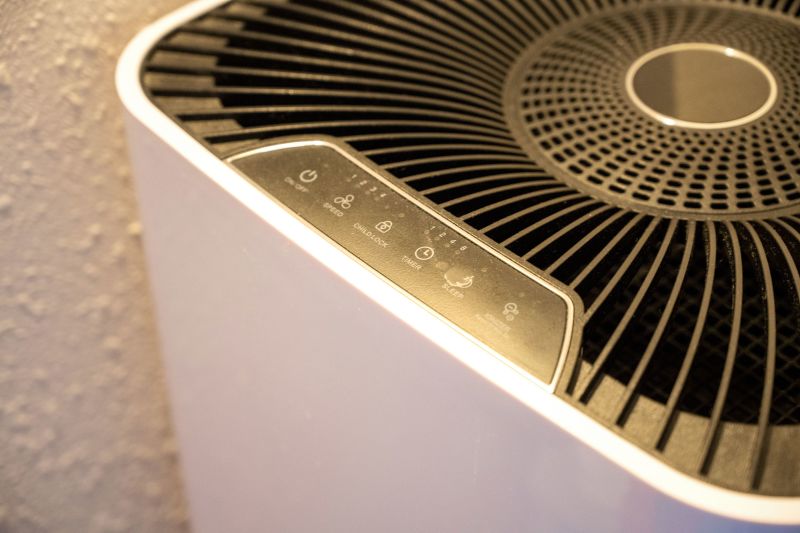Risks from the Covid-19 pandemic and increasingly intense wildfire seasons have sparked interest in air purifiers as a tool to keep indoor air healthy. But experts say they can be just as important to help manage indoor air pollution when there isn’t an acute air crisis.
Air purifiers purchased during the pandemic to zap airborne coronavirus particles can also help reduce the amount of allergens and other irritants that have been linked to asthma and other respiratory disease, but scientists are still working to understand how to measure their effectiveness on a broad scale.
Other interventions – particularly ventilating indoor air by introducing new outdoor air and directly removing the source of indoor air pollution – may have a bigger impact on health outcomes, and they’ve been the focus of recent federal action.
The US Centers for Disease Control and Prevention updated its ventilation guidance last year, marking the first time a federal agency has set a target – five air changes per hour – for how much rooms and buildings should be ventilated. And this fall, the US Environmental Protection Agency updated its ventilation guidance to prevent the spread of respiratory viruses and awarded $34 million in grants to address indoor air quality in schools.
What air purifiers can and can’t do
Air purifiers can’t fully eliminate indoor air pollutants, but they can help with the process of cleaning indoor air and come with little to no risk, experts say.
“I wouldn’t think of an air purifier as the one thing I’m going to do to address indoor air pollution,” said Dr. Elizabeth Matsui, a pediatric allergist and director of the Center for Health and Environment: Education and Research at The University of Texas at Austin’s Dell Medical School. However, “you are certainly not harming anything by using them, even if you your home has low levels of air pollution, and you are very likely to be helping promote the health of yourself and your family members.”
Humans spend the vast majority of their time – about 90% – indoors, and the quality of indoor air is often many times worse than the air outdoors.
But indoor air quality is not regulated in the same way that outdoor air quality is in the United States, and it’s been the subject of far less research. Compelling evidence is starting to add up, though.
A study published in the journal JAMA Pediatrics this month made a direct link between air purification and lung health in children. In an area of China with high levels of outdoor air pollution, healthy school-age children who had air purifiers in their classrooms and bedrooms were exposed to nearly 50% less particulate matter than those who didn’t – and they also had better air flow and breathing capacities.
Earlier research has also focused on children with asthma who live with smokers in the home and found that air purifiers that were running about 60% of the time help cut fine particle indoor air pollution by 25% to 50% and reduce asthma symptoms.
Still, more direct links between different interventions and their ability to reduce airborne particle matter – and how that translates into health benefits – are lacking, experts say. Drawing these connections could help spark more meaningful policy change.
“The best data point that I wish we could have at this point is a really good long-term epidemiological study that tells us exactly how much reduction in disease you have when people are doing any one of these specific recommendations,” said Dr. Vito Ilacqua, interim director of the EPA’s Center for Scientific Analysis, whose research focuses on indoor air quality. “Actually seeing the reduction in mortality and in morbidity in a well-done study – that would be the most convincing piece of evidence.”
Although science is not yet able to determine direct causation between air purifiers and health benefits, experts say consumers should feel confident that using an air purifier is a practical – and healthy – choice.
“The principle is that you just want to lower the exposure [to particulate matter] to the greatest extent that you can,” Matsui said. “The best we have is: Indoor PM is bad for you, and if you use these air purifiers, you will lower PM, and the more that you lower PM, the greater the likelihood that there is some health benefit to that.”
Picking the right air purifier
Industry standards for air purifiers are in development, but they are not currently regulated in the US, and some companies have capitalized on the surge in interest in indoor air quality with overblown claims about their products’ effectiveness.
Experts say a short checklist can help ensure the choice of a quality product for home use.
Most important, it’s key that the air purifier is strong enough to work in the room or area it will be in. Most portable air cleaners are rated according to their clean air delivery rate, or CADR. Higher rates mean the product can remove more particles and help clean a larger area. The rating typically reflects use at the highest speed, according to the EPA.
Tobacco smoke has small particles that are better addressed with higher CADR ratings, while dust is a pollutant with medium-sized particles, and pollen has large particles, according to the EPA. Rooms with high ceilings may also require higher CADR ratings.
Products that include an activated carbon filter can also help filter gases, but there is no rating system for this aspect.
- Sign up here to get The Results Are In with Dr. Sanjay Gupta every Friday from the CNN Health team.
Experts generally recommend against products that use ionization technology because it can release harmful ozone into the air, which can irritate the lungs. And more research is being done to understand the safety of certain ultraviolet radiation technologies used to disinfect in nonmedical settings.
Generally, air purifiers that are running longer and with higher fan speeds will filter more air, which is believed to reduce the amount of exposure to airborne particles and therefore reduce potential health impacts – but there’s not an exact science to the scale of those connections just yet.
And human behavior can affect how effective an air purifier is, experts say. The appearance and noise level can be key factors in how likely they are to be used and have a chance to make a difference.
“I think often what happens is, people purchase them, they have an intent to use them, and then they don’t use them, or they use them on the low setting,” Matsui said. “That’s a black box that we don’t understand: how human behavior and how you would normally use equipment or a device or an instrument like that in real-life settings actually would work.”

